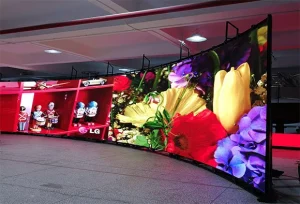
LED in Modern Art
LED in Modern Art: Innovation and Integration
LED in modern art is reshaping how artists create, present, and interact with their audience. By merging art with cutting-edge technology, artists can push boundaries like never before. Moreover, LED screens offer dynamic, bright, and engaging visuals. Thus, they are an innovative tool that allows for more expression, creativity, and interactivity in the art world.
Versatility of LED in Modern Art
First of all, LED screens are incredibly versatile. They can display static images, videos, animations, or even real-time interactive visuals. This means artists are not limited to one format; they can mix various elements. Additionally, LEDs are customizable, so artists can create small, delicate pieces or massive, immersive installations. As a result, LEDs can fit into any gallery, museum, or public space, enhancing the visual experience.
Key Advantages of Using LED in Modern Art
Bright and Vivid Visuals
LEDs are known for their bright, bold colors. This feature makes artworks more vivid and eye-catching. Therefore, viewers can enjoy clear, high-quality images, even in bright settings. In contrast, traditional screens may struggle to deliver the same intensity. With LED screens, colors pop, details stand out, and art becomes more dynamic.
Energy-Efficient and Sustainable
Another advantage is that LED screens are energy-efficient. They use less power than older display technologies. Consequently, they reduce energy costs, making them eco-friendly. Artists and galleries looking for sustainable solutions often opt for LED displays.
Interactive and Immersive Experience
Moreover, interactive LED installations are on the rise. Some art pieces respond to motion, sound, or touch, engaging the audience directly. For example, a screen might change its visuals based on a viewer’s movements. This feature creates a new way of experiencing art—one that is engaging and fun. As a result, viewers do not just look at art; they participate in it.
Applications of LED Technology in Modern Art
Exhibitions and Installations
LED screens are popular in exhibitions, displaying digital paintings, video art, and more. In public spaces, large LED installations transform environments. Urban art projects often use LEDs to light up streets and buildings, creating vibrant displays.
Live Performances and Concerts
LED screens add depth to live performances like concerts and theater shows. They create dynamic backdrops that enhance storytelling through changing settings, colors, and patterns.
Augmented Reality (AR) and Mixed Media Art
With new technology, artists blend LEDs and AR. Viewers use smartphones to see extra visual layers on LED displays, merging digital and physical art for a unique, layered experience.
Future Trends: What’s Next for LED Art?
Looking ahead, the future of LED technology in modern art seems promising. First, new developments like micro-LEDs will offer even better brightness, clarity, and color. Secondly, flexible LED screens may become more common, allowing artists to create curved or uniquely shaped displays. Lastly, there is a growing trend towards integrating AI, which can make LED art more adaptive and intelligent. Thus, the potential is vast and exciting.
In conclusion, LED technology in modern art is a game-changer. It brings new ways for artists to explore their creativity and engage audiences. Whether through vibrant colors, interactive elements, or eco-friendly benefits, LEDs are setting new standards for what is possible in the art world. Therefore, artists, curators, and even art enthusiasts should look at LEDs as a vital tool for the future. If you want to experience art in a new light, pay attention to the latest LED art trends. They are bright, bold, and here to stay.












